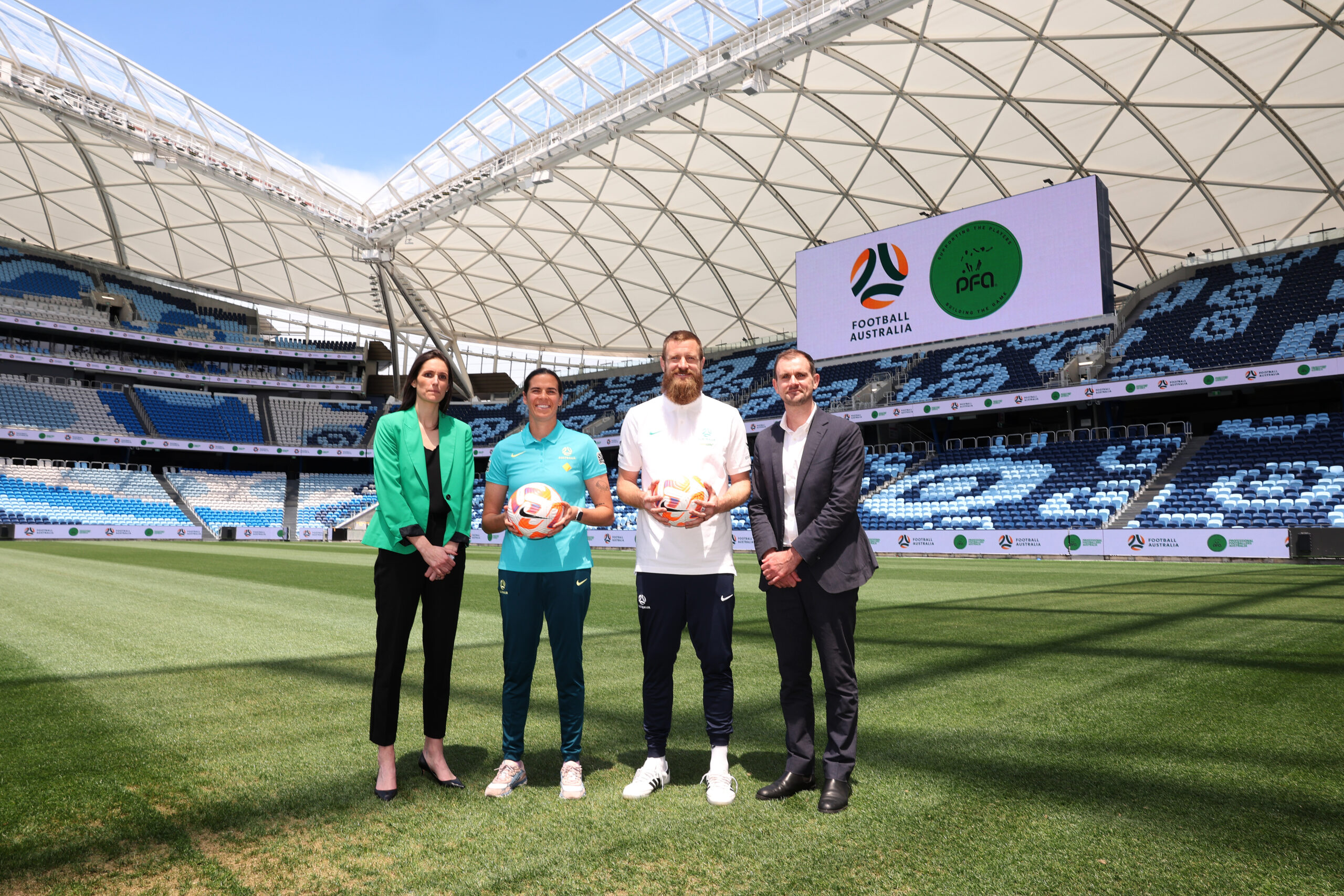Following the announcement of a new Collective Bargaining Agreement (CBA) between Football Australia (FA) and Professional Footballers Australia (PFA), PFA Co-Chief Executives Kate Gill and Beau Busch sat down to answer some of the key questions about the agreement.
Q: What does the agreement cover?
Kate: The CBA covers all aspects of players engagement in the Matildas and Socceroos. This includes their travel, accommodation, minimum staffing standards, pay, prize money allocation, use of their image, and commercial and game development obligations. This agreement will also safeguard minimum levels of investment into Australia’s Junior National Teams and the PFA’s Footballers’ Trust, and for the first time, investment into the PFA’s Past Players Program.
Q: How long is the agreement for?
Beau: The CBA will run until 30 September 2027. This period will include two FIFA World Cups (Men’s and Women’s), the 2023 Paris Olympics and three Asian Cups, so clearly, it is a critical period for the sport, with the CBA providing certainty for this period for the players and FA.
Q: What are the key aspects of the agreement?
Kate: Like the 2019 agreement, we have maintained a revenue share model. The CBA defines the revenues the players generate, and from there, the players receive a share of that revenue pool. In addition, we have maintained the principle of gender equality, so player payments for the Matildas and Socceroos are the same as are the conditions afforded to the players.
We are also able to work with FA to ensure continued investment into player welfare programs through the PFA’s Player Development Program.
In terms of player prize money, the players and FA will now share a 50:50 split of payments from FIFA World Cup tournaments. If FIFA equalises prize money for the 2027 FIFA Women’s World Cup, the Matildas and Socceroos are set to earn similar overall salaries across the four-year period of this deal.
Related: The PFA Post: The Matildas have arrived as FA’s second commercial engine
Q: What amount of money do the Socceroos and Matildas generate for the game?
Beau: The national teams directly contribute between one third and half of FA’s revenues. This doesn’t include indirect sources such as amateur player registration fees, which are projected to increase off the back of the national teams’ recent achievements.
Q: Do Australia’s grassroots registration fees pay for the National Teams?
Kate: This is a long-standing myth. In fact, it is the opposite. The Socceroos and Matildas generate revenue that is reinvested in the sport by FA. Under a revenue share model, the players can only earn a share of the revenues that they generate.
Q: What are the main differences from the 2019 CBA?
Beau: The revenue share model has been enhanced, with the players’ share scaling up and down depending on the overall revenues they generate. This means they are incentivised to grow the game’s revenues for the benefit of the Australian football community. In addition, the Matildas have transitioned from centralised contracts to match payments and commercial payments in line with the Socceroos.
There will be a greater level of investment in player welfare programs, which will better equip the PFA’s Player Development Program to support current, former and future National Team players, and the players’ voice has been embedded via the establishment of a joint player, PFA and FA committee.
Importantly, this agreement will allow for regular and consistent investment in the PFA Footballers’ Trust and allow the players to have a greater impact off the pitch. FA have also acknowledged, through the CBA, their obligations to respect and protect all internationally recognised Human Rights.

Q: How long were the negotiations?
Kate: CBA negotiations commenced with FA in January this year. They have been the most wide ranging I have been involved in, and over 40 players actively participated in the negotiations with FA.
Q: How do the players feel about the new agreement?
Beau: They have been involved from the start in forming our vision for a new agreement in late 2022 to, and as Kate said, participating in the negotiations directly, so they have been there every step of the way. In addition, the agreement was unanimously approved by the players. This is their agreement.
Q: What comes next?
Kate: We now need to bring the agreement to life with FA. That means playing our role in driving greater community connection for both teams, growing the revenue base of the National Teams to allow for more investment into all areas of the game and working in partnership to continue to ensure players and staff have a world class environment.
In addition, we have the small matters of World Cups, Olympics and Asian Cups. There is so much to look forward to over the next four years.
To learn more about the agreement’s key details, view the National Teams CBA Fact Sheet here







